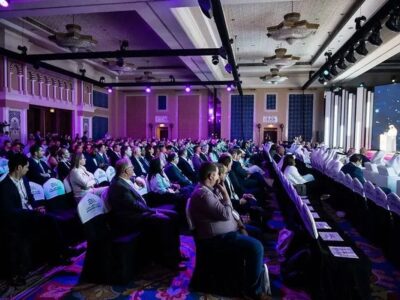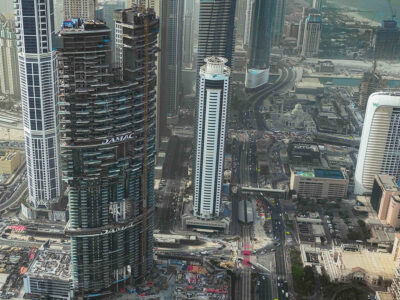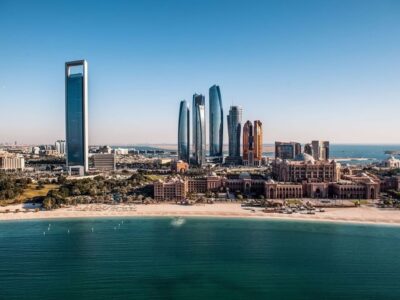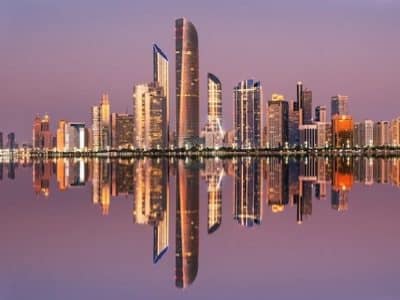A growing awareness of health and safety is not only requiring contractors to implement more sophisticated forms of on-site practice but is also attracting a wealth of interest and experience from overseas firms, particularly from the UK, which specialise in site protection products. Last month, UK firm Tekra, which supplies rope access solutions, visited Dubai at the invitation of contractor Mott MacDonald.
“We didn’t really grasp the full potential that Dubai offers,” says the company’s director, Jason Dennis.
“We had done some research, but it isn’t until you get out here that you grasp the extent of what’s on offer – it’s colossal.”
Rope access is a form of work positioning, developed from techniques used in climbing and caving, which applies practical ropework to allow workers to access difficult-to-reach locations without the use of scaffolding or cranes.
The very limited penetration of rope access solutions in the region has ensured that Tekra is well placed to capitalise on a growing demand for such technology. Rope access has been used on construction sites in the UK for 20 years and is a well-established method within the more mature markets of the US and Australia. Dennis explains that the technology – which is proven to be the safest method of working at height in the world – has obvious application benefits for the region, especially in Dubai, where extensive high-rise projects are taking place.
“Rope access tends to replace scaffolding in 60% of its applications. And on average it’s 40% faster – at times we have finished a job before the scaffolding is even erected,” says Dennis. “It also works out cheaper because we use just one trained man, whereas on other jobs you’d need two.”
Rope access is still very much in its early stages in Dubai and because it’s a skills-based approach, Tekra plans to train local staff in using the method and bring in supervisors from the UK to manage projects. “Mott MacDonald is very keen and they have started to look in Pakistan and India as potential markets for our applications,” says Dennis. The company also visited Atkins during its time in Dubai.
Another UK firm, which has witnessed an increase in demand over the last 12 months, is Latchways Fall Protection. The Latchways system was originally invented in 1974 for use on yachts to enable sailors to move around safely without having to unhook themselves from the vessel’s handrail.
The design has evolved since then but the concept largely remains the same and is now widely used in the UK on applications that require people to work at height. The user wears a full-body harness and an energy-absorbing lanyard and is continuously attached to an anchorage system. The systems were launched in the region last year in response to an increased emphasis on safety.
“At the moment we deal very closely with Rigidal Industries – a roofing company – but a lot more architects are specifying safety systems on roofs now,” says Gareth Owen, managing partner, Marine Tech, distributor of the Latchways system in the UAE.
“We have been working hard at it for 12 months. When we first got here, we weren’t being approached at all, whereas now there is quite a lot of interest, especially on the large projects, which suggests things are moving in the right direction.”
But Owen is quick to point out that more could still be done in this regard. “There are a lot of roofs out there that do not have safety equipment on top. For example, warehouses have skylights that are not being covered, and it’s a risk.”
Owen is also sceptical when questioned whether contractors will push this issue. “I think that contractors will only use roof safety systems if it is requested by the architects.”
But he adds that the company is working with a few contractors who are agreeing to comply with certain regulations.
The situation is not helped by the lack of accountability for implementing such systems, adds Owen. And the current situation is inconsistent and is holding back further improvements within the area. “The rules say, if you own a building you are responsible for fall protection. If someone falls off the roof and you haven’t put a fall protection system up, then you are at fault. But if the architect didn’t supply a fall-protection system, it’s the architect’s fault. The whole circle goes round. One of the things we do when we design a fall-protection system is take full liability for the system to protect the roof and workers.”
Latchways’ components are manufactured from marine grade 316 stainless steel and have a safety factor of two. In addition to ensuring safety for workers the system is designed to prevent damage to the building fabric should the user fall. “Old systems used to be a wire that was bolted to the roof. If someone fell, it tore the roof apart. With the system we have now developed, if someone falls, it transmits the load back to the roof so there is no damage done to the roof, and the person actually has the load absorbed: he’s falling so slowly that he doesn’t do himself any harm.”
The company has also set its sights on other markets in the Middle East including Qatar, Kuwait and Oman.
UAE companies are also entering the market with technology designed to improve the safety of those working at height. Sharjah-based harness manufacturer, Allsafe, manufactures shock absorbers that should be used in conjunction with harnesses for construction workers who are working at height.
The company’s managing director, Cyril Requillart, says that while an increasing number of contractors are using harnesses for their workforce, some are still not using shock absorbers, which would take most of the impact out of a fall. Even when a worker is wearing a harness, he can sustain potentially life-threatening injuries if the harness does not feature an absorber.
In the event of a fall, the shock absorber extends by between 2.5 and 3m, breaking the fall and minimising the potential for injury. Around 80% of the company’s sales are in the Middle East, 40% of which is accounted for in the UAE, driven by the construction boom and high-rise projects in the region.
Requillart is concerned, however, that although the company sells around 100,000 harnesses in the Middle East market every year, it is to larger, more established companies. The smaller companies within the sector continue to show less interest in modernising their health and safety approach.
“Slowly, people are changing, especially the large companies. But the small companies will do it only if they are forced by inspection, otherwise they would never do it.”
According to figures from Dubai Municipality, falls from height are the biggest killer of construction workers in Dubai. In June 2006, DM revealed that from January to May, there were 107 construction site accidents recorded, half of them had been caused by falls from height or dropped equipment. According to the figures, 39 of these accidents were fatal, and 22 of the deaths involved falls from height.







